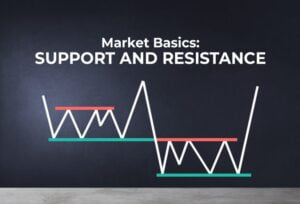
Almost every responsible individual wants to secure his financial future by investing, whether it’s for short-term goals or retirement. However, traversing the investing waters can be quite challenging for those who lack familiarity with the various products and details involved in it. Therefore, it is important to gain a clear understanding of different types of investment vehicles in order to take full advantage of these avenues.
When it comes to investing, the three amigos that always make an appearance are “stocks, bonds, and mutual funds”. But what exactly sets these three financial powerhouses apart from each other? In this article, we dive into the details of these investment products, breaking down their basics and exploring the key differences that make them unique.
What are stocks?
Also known as equities, stocks are a type of financial security that provides the stockholders with a slice of ownership in the issuing company. In simple words, by investing in stocks, you essentially become a proportionate owner of the corporation, hence aligning your financial future with theirs.
When the company prospers by selling more of its products or services, your investment can potentially spike in value, giving you a chance to reap profits. Conversely, if the company hits a rough patch, your investment can suffer losses, or in extreme cases, you might lose your entire investment. At any time, shareholders have the option to hold onto the shares or sell them on the stock exchange at a potential profit or loss.
Stocks come in a broad variety, representing diverse kinds of industries and belonging to multiple counties across the globe. From blue-chip and large-cap stocks, indicating well-established companies, to small-cap stocks, indicative of emerging ventures, the options are endless.
Note that stocks typically entail greater risk compared to bonds, but carry the potential for delivering higher returns.
What are bonds?
Bonds are an investment vehicle that enables governments or corporations to procure funds for financing their projects. They can be considered as a type of loan acquired from investors who are then paid periodic interest payments as compensation. Essentially, bonds represent a mutually beneficial agreement between issuers and investors, offering a stable and reliable means of generating income for both parties.
To put it another way, you can think of bonds as “fixed income” assets that keep on giving – you’ll receive regular interest payments until the bond reaches maturity. The interest payments are set in stone from the get-go, making them a dependable investment choice.
As an example, suppose that a company requires $5 million to fund a specific project. In order to gain the necessary capital, they opt to issue a 2-year bond to potential investors. Hence, anyone can purchase the bonds at the issue price, and the company will compensate the buyers with interest on the amount paid for the bond. Upon the bond’s maturity, the company will repay the full face value of the bond to the investor.
It should be noted that bonds serve as an alternative means for cities or states, government entities, and corporate organizations to obtain loans outside of traditional bank lending.
What are mutual funds?
Mutual funds are collaborative investment funds that gather capital from multiple investors to purchase a diversified portfolio of securities.
By purchasing a mutual fund, investors gain instant access to a wide range of financial assets, without having to manage each investment individually. This type of investment strategy is known for greater flexibility and risk management, as it spreads the risk of any single asset across the entire portfolio.
Typically, these funds are overseen by financial professionals who manage all the fund assets. It means that once you have invested in a mutual fund, you won’t have any direct control over what securities are bought or sold within the fund. Also, unlike stocks, mutual funds aren’t traded on public exchanges, and orders to buy or sell shares are executed based on the fund’s net asset value (NAV) after market hours.
Mutual funds consisting of stocks are categorized on the basis of several factors, including a company’s size, sector, location, and investing style. This enables investors to easily find a mutual fund that suits their investment style and objectives.
Having said that, while stock funds are the most popular and common type of mutual funds, several other kinds of mutual funds also exist that invest in bonds, commodities, real estate, and cryptocurrency.
Also read: ETFs vs Mutual Funds: Which One is Better?
Which option is best for you: Stocks, bonds, or mutual funds?
The optimal choice between these options typically hinges on your time horizon, age, and tolerance for risk.
Investing in stocks and mutual funds can be a bit of a wild ride, as there is no assurance that the company or included assets will perform well. But taking risks can often lead to higher returns, and that’s precisely what makes their trading so enticing. Specifically, when it comes to long-term aspirations that lie at least 5-10 years ahead, stocks – whether owned individually or through mutual funds – reign supreme. This extended time frame is vital to cushion the perils of stock investing as there remains ample opportunity for the stock to rebound and resurge at a higher destination in the event of a market downturn.
However, while stocks offer the prospect of remarkable growth, bonds can help stabilize your investment portfolio. They can be a valuable tool in diversifying your investment kit, and with their fixed returns, they provide a reliable source of income that can supplement the fluctuating returns of stocks.
Moreover, bonds are considered a valuable asset for individuals who have short-term goals or who prioritize minimizing risk, such as those who are saving for retirement. While bonds may not offer the same high potential returns as stocks, they provide the peace of mind that your investment funds will be easily accessible when needed.
Achieving an equilibrium between pursuing growth through your investments in stocks and mutual funds, and incorporating stability and safety via bonds may ultimately hold the key to financial success.












